Answered step by step
Verified Expert Solution
Question
1 Approved Answer
3. A positive charge Q is located at point. The electrostatic force due to Q, slowly pushes a point charge (no acceleration), q= 3C,
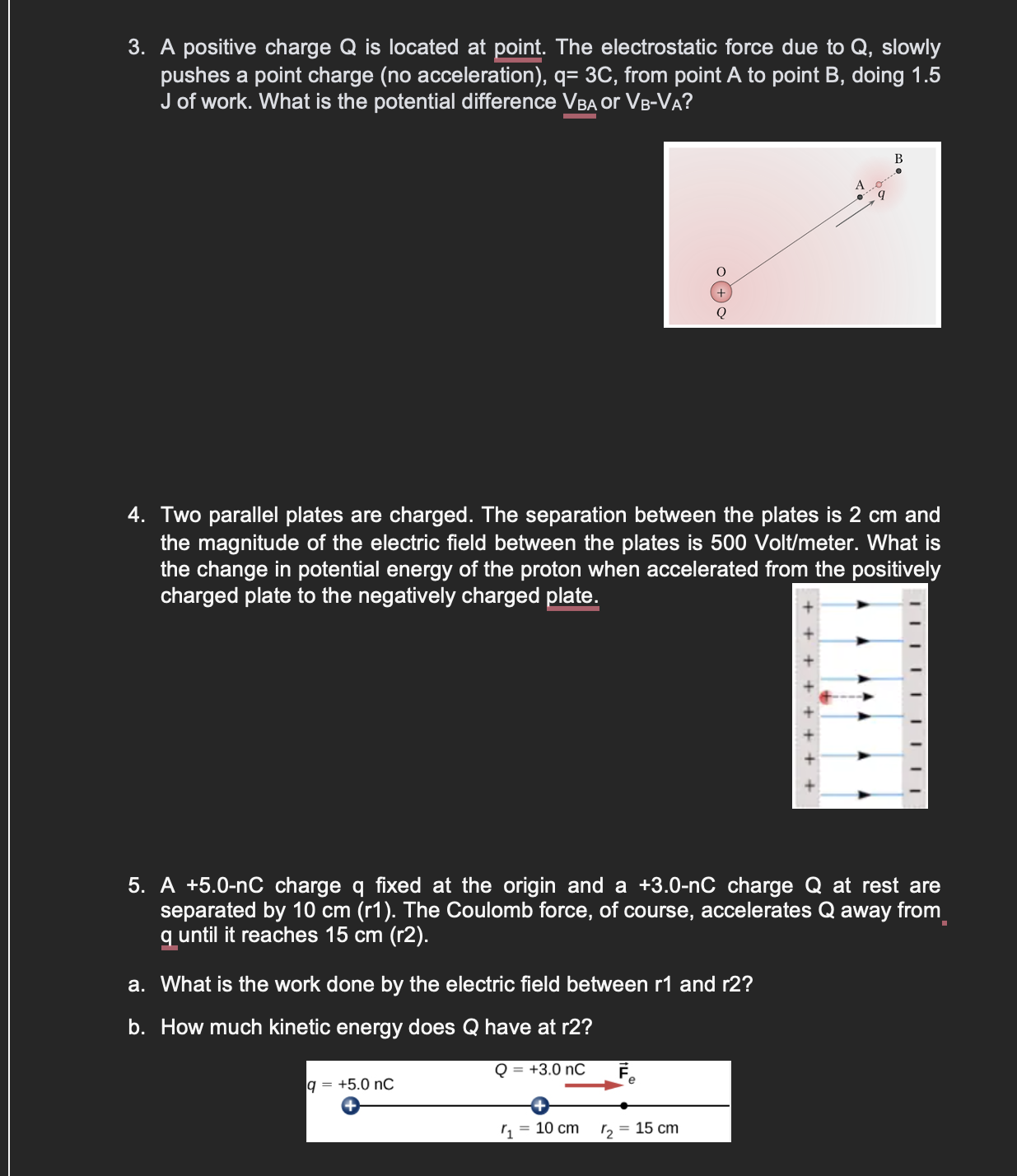
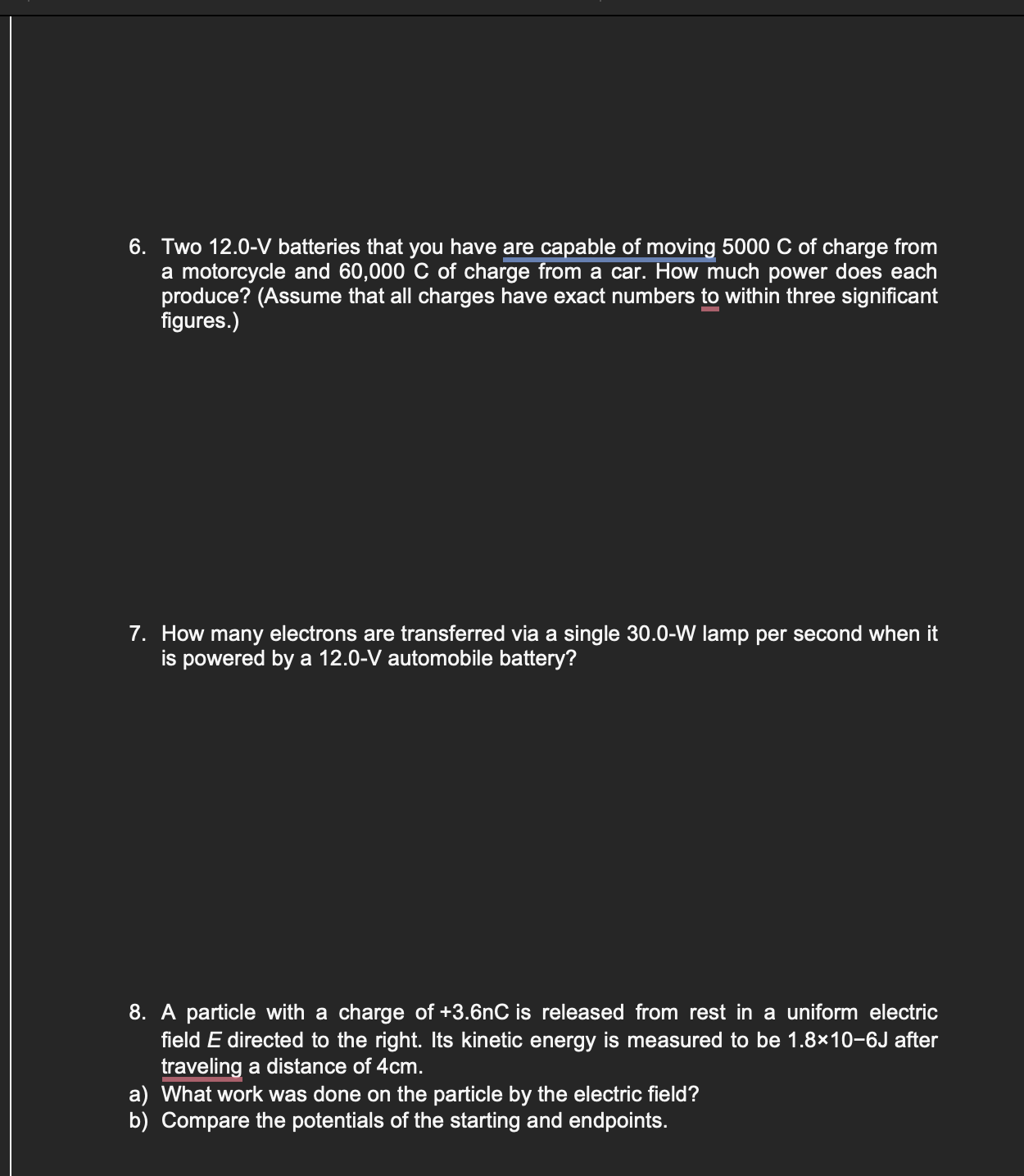
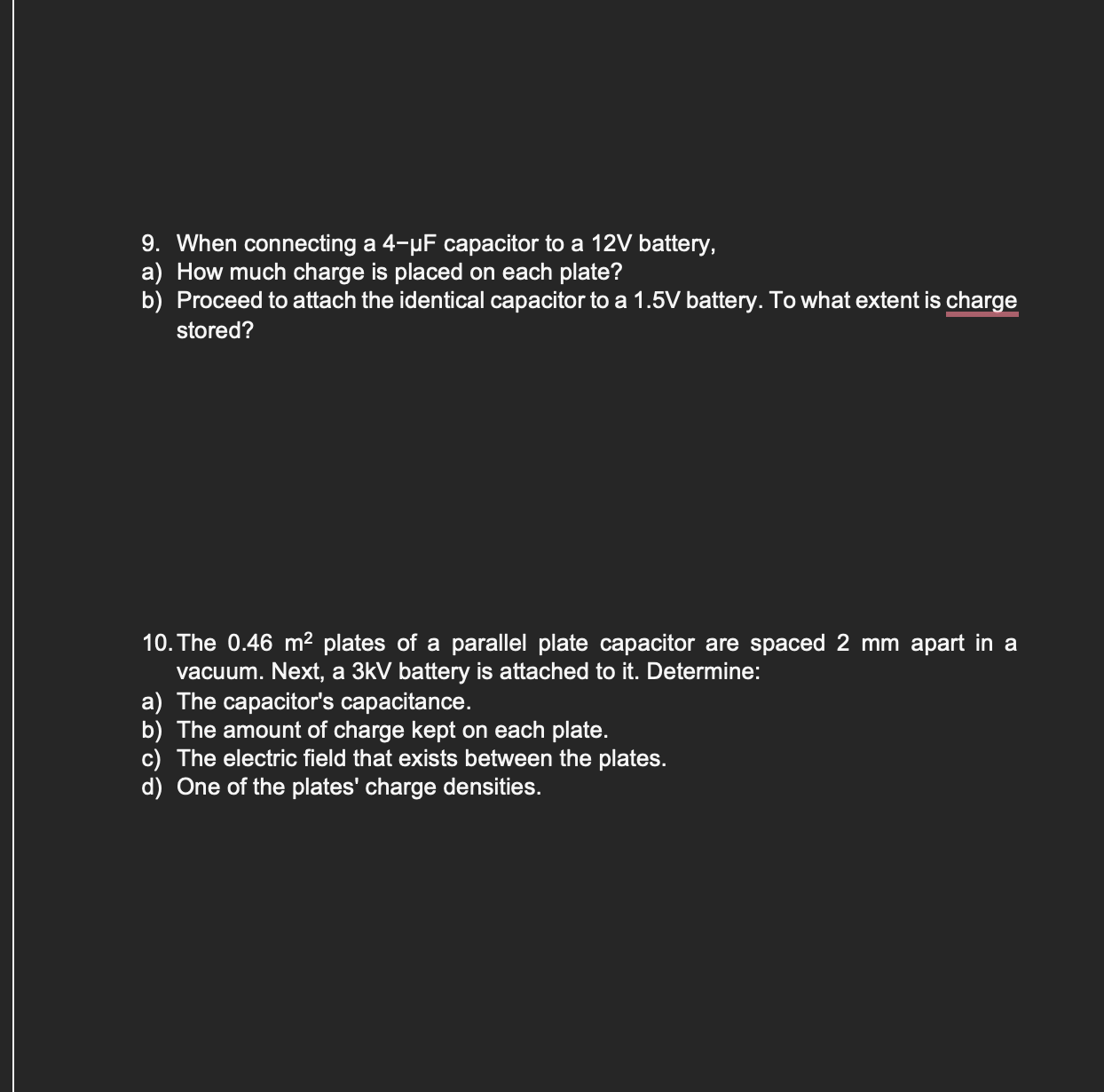
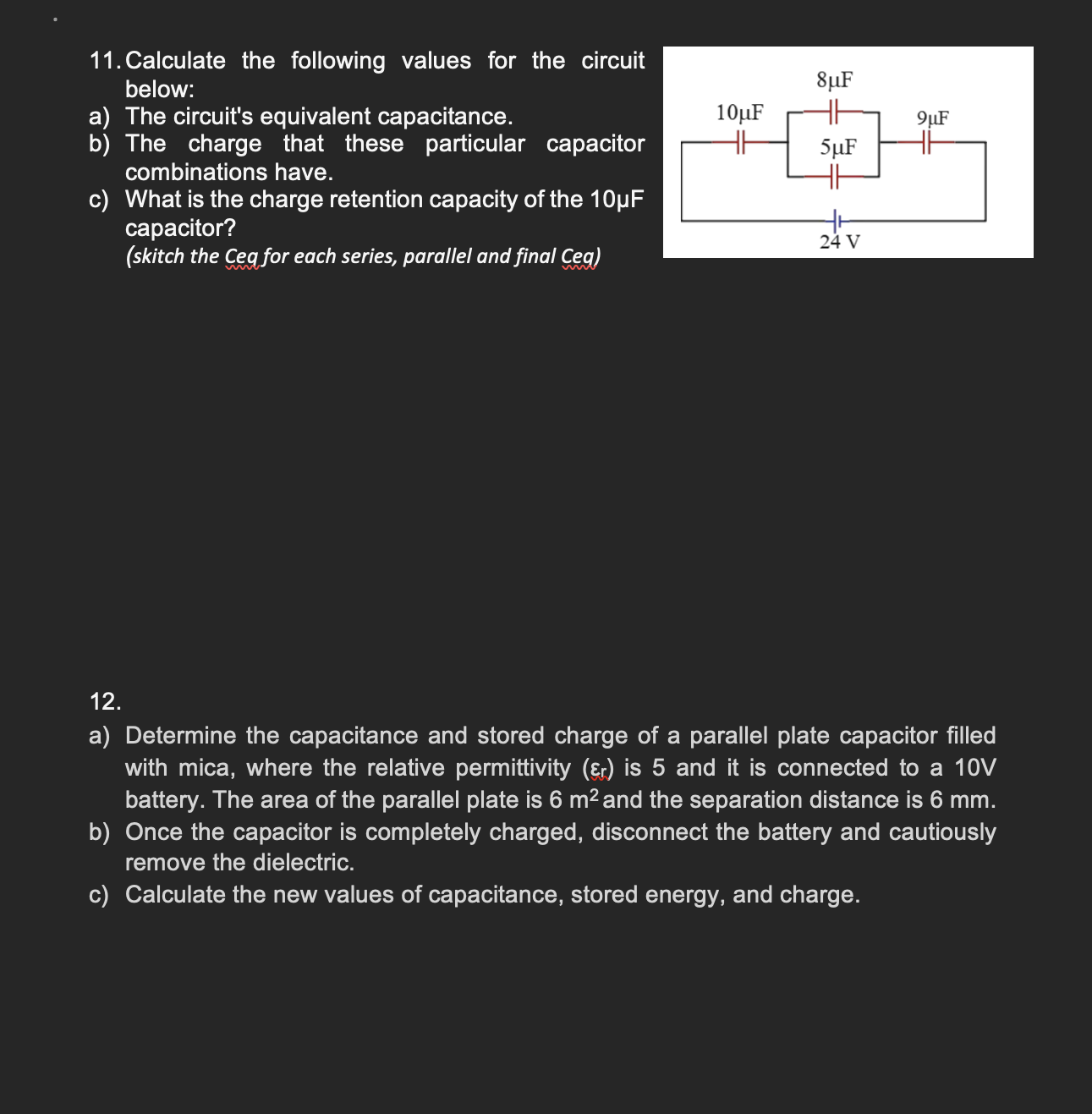
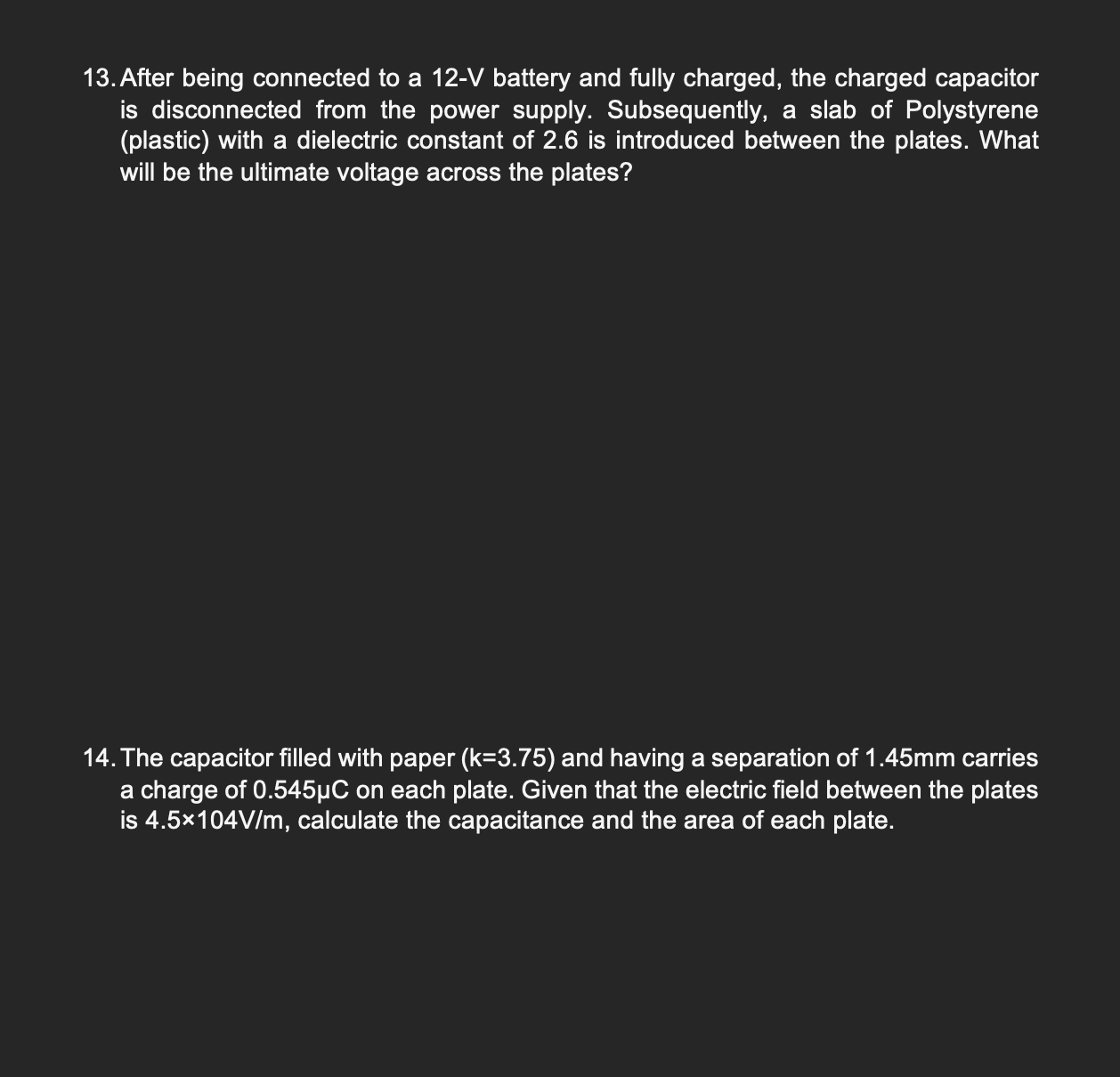
3. A positive charge Q is located at point. The electrostatic force due to Q, slowly pushes a point charge (no acceleration), q= 3C, from point A to point B, doing 1.5 J of work. What is the potential difference VBA or VB-VA? + Q B 4. Two parallel plates are charged. The separation between the plates is 2 cm and the magnitude of the electric field between the plates is 500 Volt/meter. What is the change in potential energy of the proton when accelerated from the positively charged plate to the negatively charged plate. 5. A +5.0-nC charge q fixed at the origin and a +3.0-nC charge Q at rest are separated by 10 cm (r1). The Coulomb force, of course, accelerates Q away from q until it reaches 15 cm (r2). a. What is the work done by the electric field between r1 and r2? b. How much kinetic energy does Q have at r2? q= +5.0 nC Q = +3.0 nC = 10 cm 2 = 15 cm 6. Two 12.0-V batteries that you have are capable of moving 5000 C of charge from a motorcycle and 60,000 C of charge from a car. How much power does each produce? (Assume that all charges have exact numbers to within three significant figures.) 7. How many electrons are transferred via a single 30.0-W lamp per second when it is powered by a 12.0-V automobile battery? 8. A particle with a charge of +3.6nC is released from rest in a uniform electric field E directed to the right. Its kinetic energy is measured to be 1.810-6J after traveling a distance of 4cm. a) What work was done on the particle by the electric field? b) Compare the potentials of the starting and endpoints. 9. When connecting a 4-F capacitor to a 12V battery, a) How much charge is placed on each plate? b) Proceed to attach the identical capacitor to a 1.5V battery. To what extent is charge stored? 10.The 0.46 m plates of a parallel plate capacitor are spaced 2 mm apart in a vacuum. Next, a 3kV battery is attached to it. Determine: a) The capacitor's capacitance. b) The amount of charge kept on each plate. c) The electric field that exists between the plates. d) One of the plates' charge densities. 11. Calculate the following values for the circuit below: a) The circuit's equivalent capacitance. b) The charge that these particular capacitor combinations have. c) What is the charge retention capacity of the 10F capacitor? (skitch the Ceg for each series, parallel and final Cea) 8F 10F 9F 5F 24 V 12. a) Determine the capacitance and stored charge of a parallel plate capacitor filled with mica, where the relative permittivity (r) is 5 and it is connected to a 10V battery. The area of the parallel plate is 6 m and the separation distance is 6 mm. b) Once the capacitor is completely charged, disconnect the battery and cautiously remove the dielectric. c) Calculate the new values of capacitance, stored energy, and charge. 13. After being connected to a 12-V battery and fully charged, the charged capacitor is disconnected from the power supply. Subsequently, a slab of Polystyrene (plastic) with a dielectric constant of 2.6 is introduced between the plates. What will be the ultimate voltage across the plates? 14. The capacitor filled with paper (k=3.75) and having a separation of 1.45mm carries a charge of 0.545C on each plate. Given that the electric field between the plates is 4.5104V/m, calculate the capacitance and the area of each plate.
Step by Step Solution
There are 3 Steps involved in it
Step: 1

Get Instant Access to Expert-Tailored Solutions
See step-by-step solutions with expert insights and AI powered tools for academic success
Step: 2

Step: 3

Ace Your Homework with AI
Get the answers you need in no time with our AI-driven, step-by-step assistance
Get Started


